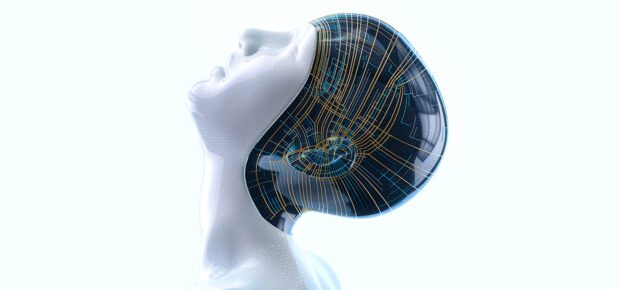April 25, 2024
You’ve heard of artificial intelligence – now more commonly known as AI. But what about artificial general intelligence? Sometimes referred to as AGI, this mainstay of science fiction and philosophy for decades embodies the idea of an AI that is capable of human-like reasoning ability.
When chatbots and generative AI first reached mass consumption, it seemed like that milestone was tantalizingly close. And yet, once the shine of these tools wore off, most experts realized that they are not capable of reasoning in the same way humans do.
“Despite numerous breakthroughs, generative AI lacks human-like reasoning because it operates based on patterns and data without grasping their meaning,” said Karthik K., IEEE member. “It cannot yet generalize, going from situations with very little information and applying it to a broader context. It cannot extend already-learned concepts to new situations.”
So what is the difference between AI and AGI? And how would we know when it has reached the level of human decision-making? Those questions are hard to answer, in part because there’s no universally accepted definition of AI, let alone AGI.
But those questions are important to ask nonetheless because they illuminate the capabilities, and the limitations of today’s technology.
No Clear Definition of AI
The definition of AI is squishy, and touches on multiple disciplines. One editorial for IEEE Transactions on Artificial Intelligence noted that scholars from several disciplines —computer science, psychology, biology, math and physics — have tried to define it.
“Every definition has been criticized, and has failed to obtain consensus within each of these disciplines, let alone universal consensus,” the editorial noted.
Test for AGI
In the absence of a clear definition of AGI, numerous theorists have proposed a variety of tests for artificial general intelligence. The idea is, we might not be able to define it, but maybe we’d know it when we see it.
The most famous is the Turing Test in 1950, which envisions a group of experts convened to ask questions of an “Oracle.” If the experts reach the point where they cannot tell whether the answers come from a human or a machine, then according to the test, AGI has been reached.
Another, the Wozniak Coffee Test, is more whimsical. It’s based on a purported claim by IEEE Fellow and Apple co-founder Steve Wozniak, who said that no robot would be able to enter a random house and make a cup of coffee. The idea being that, while making coffee seems simple, it’s quite difficult, given the way houses differ in layout, the way people organize their cupboards, the varied methods of making coffee, etc.
Are Chatbots on the Cusp of AGI?
The difference between artificial intelligence and its human-like counterpart exists on a continuum, according to an in-depth discussion from Computer magazine, published by the IEEE Computer Society. Early artificial intelligence developed expertise in a single domain, like the games chess and go. Advanced AI’s today can understand language, translate language to images, and analyze images for signs of cancer, among other things.
And while those achievements are impressive, they don’t exactly think and reason the way humans do.
So how far away are the chatbots from achieving AGI?
At first glance, chatbots like ChatGPT come awfully close to passing the Turing Test to be classified as AGI. They can write plausible-sounding essays, in a variety of disciplines, with confidence.
While chatbots can even pass professional licensing exams in fields like law, they also fail at the basics. Chatbots frequently get math problems wrong. They misattribute quotes, and don’t always understand cause and effect, arriving at wrong answers on reasoning problems.
“The next step in achieving AGI might involve developing AI systems that can demonstrate more advanced reasoning, problem-solving and learning capabilities across a wide range of domains,” said IEEE Member Sukanya Mandal. “This could include the ability to transfer knowledge from one context to another, to learn from limited data or examples, and to exhibit creativity and adaptability in novel situations.”






 Liquid Infrastructure: Our Planet's Most Precious Resource
Liquid Infrastructure: Our Planet's Most Precious Resource The Impact of Technology in 2025
The Impact of Technology in 2025 Quantum and AI: Safeguards or Threats to Cybersecurity?
Quantum and AI: Safeguards or Threats to Cybersecurity? Why AI Can't Live Without Us
Why AI Can't Live Without Us Bits, Bytes, Buildings and Bridges: Digital-Driven Infrastructure
Bits, Bytes, Buildings and Bridges: Digital-Driven Infrastructure Impact of Technology in 2024
Impact of Technology in 2024 Emerging AI Cybersecurity Challenges and Solutions
Emerging AI Cybersecurity Challenges and Solutions The Skies are Unlimited
The Skies are Unlimited Smart Cities 2030: How Tech is Reshaping Urbanscapes
Smart Cities 2030: How Tech is Reshaping Urbanscapes Impact of Technology 2023
Impact of Technology 2023 Cybersecurity for Life-Changing Innovations
Cybersecurity for Life-Changing Innovations Smarter Wearables Healthier Life
Smarter Wearables Healthier Life Infrastructure In Motion
Infrastructure In Motion The Impact of Tech in 2022 and Beyond
The Impact of Tech in 2022 and Beyond Cybersecurity, Technology and Protecting Our World
Cybersecurity, Technology and Protecting Our World How Technology Helps us Understand Our Health and Wellness
How Technology Helps us Understand Our Health and Wellness The Resilience of Humanity
The Resilience of Humanity Harnessing and Sustaining our Natural Resources
Harnessing and Sustaining our Natural Resources Creating Healthy Spaces Through Technology
Creating Healthy Spaces Through Technology Exceptional Infrastructure Challenges, Technology and Humanity
Exceptional Infrastructure Challenges, Technology and Humanity The Global Impact of IEEE's 802 Standards
The Global Impact of IEEE's 802 Standards Scenes of our Cyber Lives: The Security Threats and Technology Solutions Protecting Us
Scenes of our Cyber Lives: The Security Threats and Technology Solutions Protecting Us How Millennial Parents are Embracing Health and Wellness Technologies for Their Generation Alpha Kids
How Millennial Parents are Embracing Health and Wellness Technologies for Their Generation Alpha Kids Space Exploration, Technology and Our Lives
Space Exploration, Technology and Our Lives Global Innovation and the Environment
Global Innovation and the Environment How Technology, Privacy and Security are Changing Each Other (And Us)
How Technology, Privacy and Security are Changing Each Other (And Us) Find us in booth 31506, LVCC South Hall 3 and experience the Technology Moon Walk
Find us in booth 31506, LVCC South Hall 3 and experience the Technology Moon Walk Virtual and Mixed Reality
Virtual and Mixed Reality How Robots are Improving our Health
How Robots are Improving our Health IEEE Experts and the Robots They are Teaching
IEEE Experts and the Robots They are Teaching See how millennial parents around the world see AI impacting the lives of their tech-infused offspring
See how millennial parents around the world see AI impacting the lives of their tech-infused offspring Take the journey from farm to table and learn how IoT will help us reach the rising demand for food production
Take the journey from farm to table and learn how IoT will help us reach the rising demand for food production Watch technical experts discuss the latest cyber threats
Watch technical experts discuss the latest cyber threats Explore how researchers, teachers, explorers, healthcare and medical professionals use immersive technologies
Explore how researchers, teachers, explorers, healthcare and medical professionals use immersive technologies Follow the timeline to see how Generation AI will be impacted by technology
Follow the timeline to see how Generation AI will be impacted by technology Learn how your IoT data can be used by experiencing a day in a connected life
Learn how your IoT data can be used by experiencing a day in a connected life Listen to technical experts discuss the biggest security threats today
Listen to technical experts discuss the biggest security threats today See how tech has influenced and evolved with the Games
See how tech has influenced and evolved with the Games Enter our virtual home to explore the IoT (Internet of Things) technologies
Enter our virtual home to explore the IoT (Internet of Things) technologies Explore an interactive map showcasing exciting innovations in robotics
Explore an interactive map showcasing exciting innovations in robotics Interactively explore A.I. in recent Hollywood movies
Interactively explore A.I. in recent Hollywood movies Get immersed in technologies that will improve patients' lives
Get immersed in technologies that will improve patients' lives